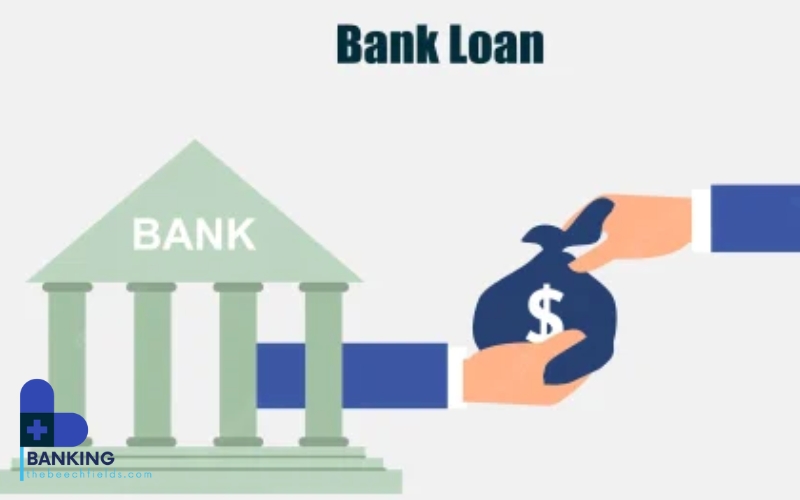Bank loan interest rates are an important factor that directly affects customers’ decisions to borrow money. Understanding interest rates helps borrowers choose the type of loan that suits their needs and financial capabilities. Loan interest rates not only determine the cost that borrowers have to pay, but can also affect the financial stability of both individuals and businesses. This article will help you learn about bank loan interest rates, factors that affect interest rates, and common types of interest rates in bank loan products.
1. WHAT IS BANK LOAN INTEREST RATE?
Bank loan interest rate is the percentage that borrowers have to pay to a bank or financial institution when borrowing money. This is the cost that banks collect from customers for providing loans over a certain period of time. Loan interest rates are usually calculated on the loan amount and loan term, and are expressed as an annual percentage, called the annual rate (APR).
Bank loan interest rates can be adjusted flexibly according to each loan term or fixed throughout the loan term, depending on the type of loan and the agreement between the customer and the bank. The interest rate will directly affect the borrower’s monthly payment amount, as well as the total loan cost.

2. TYPES OF BANK LOAN INTEREST RATES
Bank loan interest rates can be divided into the following main types:
Fixed interest rate
A fixed interest rate is the interest rate that the borrower will have to pay throughout the loan term at the rate agreed upon from the beginning, which does not change regardless of any fluctuations in the market. This is an ideal choice for those who want to be sure about the monthly payment amount and the total loan cost. Fixed interest rates help protect borrowers from sudden changes in the financial market.
Floating interest rate
A floating interest rate is an interest rate that can change according to the fluctuations of a base interest rate in the market, such as a central bank interest rate or other reference interest rate index. Although a floating interest rate may be lower than a fixed interest rate at the beginning, it can change throughout the loan term, making the monthly payment unstable. This is a popular choice for long-term loans or home loans.
Hybrid interest rate
A hybrid interest rate is a combination of a fixed interest rate and a floating interest rate. For the first few years, the borrower will pay a fixed interest rate, then switch to a floating interest rate. This type of interest rate gives the borrower flexibility, while also helping to minimize the impact of changing market interest rates over the life of the loan.
3. FACTORS AFFECTING BANK LOAN INTEREST RATES
Bank loan interest rates are not a fixed number, but are influenced by many different factors. These factors may include:
Central bank base interest rate
The base interest rate set by the central bank plays an important role in determining bank loan interest rates. When the central bank changes the base interest rate, commercial banks will also adjust their loan interest rates accordingly. If the central bank increases the base interest rate, banks will also increase their loan interest rates, and vice versa.
Macroeconomic conditions
The overall economic situation also affects bank loan interest rates. During periods of strong economic growth, banks may reduce interest rates to encourage borrowing and stimulate investment. Conversely, during periods of recession, interest rates may increase to reduce credit risk.
Credit rating of borrower
The credit rating (or credit score) of the borrower is an important factor in determining loan interest rates. People with high credit scores will have the opportunity to borrow at lower interest rates, because the bank has confidence in their ability to repay the loan. Conversely, people with poor or no credit history will have to pay higher interest rates, because the bank will calculate a higher level of risk when granting credit to them.
Loan type
Loan interest rates also depend on the type of loan you choose. Consumer loans, home loans, and business loans will have different interest rates. Long-term loans usually have higher interest rates because the bank faces more long-term risks, while short-term loans have lower interest rates.
4. METHODS OF CALCULATION OF BANK LOAN INTEREST
Bank loan interest rates can be calculated in different ways, the most common of which are:
Simple interest
Simple interest is a method of calculating interest that only applies to the original loan amount without calculating accumulated interest. Each repayment period, the borrower only needs to pay interest on the original loan amount, which does not change over time.
Compound interest
Compound interest is a method of calculating interest on both the principal amount and the interest accumulated in each period. This is a popular method of calculating interest in long-term loans, because interest will be calculated on the principal amount in each repayment period, resulting in a higher amount to be paid than simple interest.
5. HOW TO CALCULATE MONTHLY PAYMENTS
Calculating the monthly payment when borrowing from a bank is important to help borrowers estimate costs and payment capabilities. The monthly payment includes both principal and interest, and can be calculated by the regular repayment method or the progressive principal repayment method. Most banks today provide online calculation tools to help borrowers easily calculate the monthly payment based on the loan amount, loan term and interest rate.
CONCLUSION
Bank loan interest rates are an important factor in financial decisions of individuals and businesses. Understanding the types of interest rates, factors affecting interest rates and interest calculation methods will help borrowers make choices that suit their financial capabilities. Whether it is a consumer loan, a home loan or a business loan, understanding interest rates carefully will help borrowers save costs and manage finances effectively.
